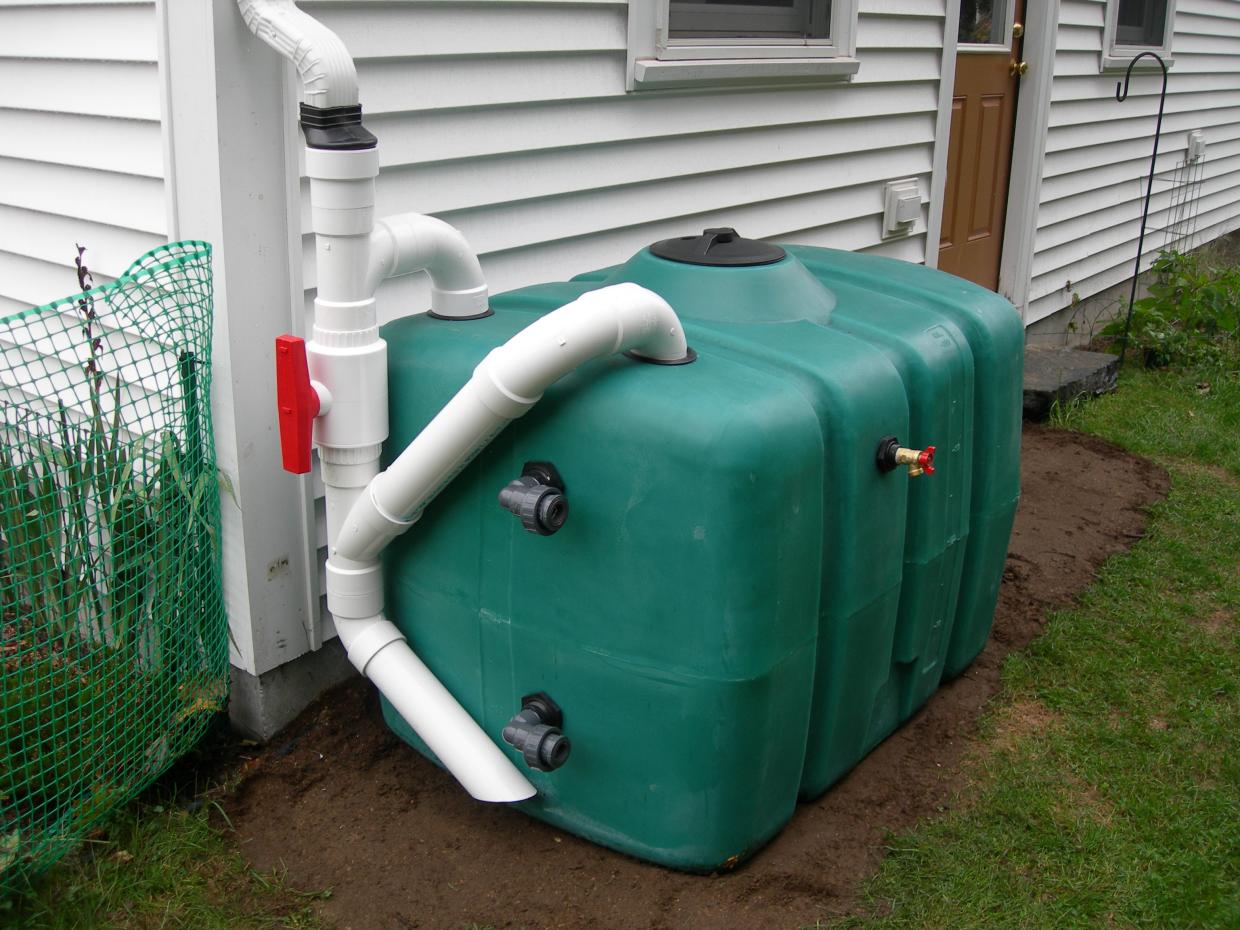Project Description
Location: Wilmington and Hamilton, MA
Purpose:
- Demonstrate the use of rainwater harvesting systems in both homes and institutional settings as a way to conserve drinking water while sustaining landscaping.
- Reduce use of groundwater for outdoor watering in the Ipswich Watershed.
- Measure the water savings resulting from participants using rainwater for all or part of their irrigation needs.
Details: Rainwater harvesting systems capture runoff from rooftops and store the water for nonpotable uses, such as lawn and garden watering, reducing demand on public water supplies.
This project funded installation of 39 rainwater harvesting systems on homes in Wilmington. The systems consisted of a storage tank, a spigot for a hose, a pressure pump for watering, and a water meter to measure flow. Two sizes of storage tanks were installed: 200-gallon tanks (28 systems) and 800-gallon tanks (11 systems).
A large (8,000-gallon) underground rainwater storage vault was also installed at the Boutwell Elementary School in Wilmington to irrigate the school ball field. When the rainwater vault is empty, the system automatically switches to the public water supply system as a backup. Lastly, a 200-gallon system was installed at the Winthrop Elementary School in Hamilton as part of an “Outdoor Classroom” educational program. The system helps water a 2,000-square-foot butterfly and vegetable garden. Teachers at the school developed a specific curriculum for the outdoor classroom and the rainwater harvesting system.
Reducing lawn watering throughout the entire Ipswich River watershed could significantly improve river flows. According to the Ipswich River Watershed Action Plan (Horsley & Witten for MA EOEEA, 2003), lawn watering accounts for 15 to 20 million gallons per day of water use in the watershed. Rainwater harvesting is most beneficial when combined with drought-resistant landscaping techniques to reduce overall irrigation needs of the plants.
Design and Installation: Rainwater Recovery, Inc., Waltham, MA
In-kind cooperation: The Town of Wilmington and the Winthrop Elementary School in Hamilton
Monitoring and Analysis: MA DCR and Tufts University with oversight from a Technical Advisory Committee
Project Photos
Milestones
- Installation of residential rainwater harvesting tanks, November 2005
- Installation of system at Winthrop Elementary School in Hamilton, September 2006
- Installation of underground system at Boutwell Elementary School in Wilmington, April 2007
- Collection of monthly flow-meter data from residential systems: April-Oct. 2006 & 2007
Costs
200-gallon systems: $1,375 each
800-gallon systems: $3,440 each
8,000-gallon underground vault: $23,000
Data Collection and Analysis
The water meters attached to each rainwater harvesting system provided data on the volume of rainwater pumped from the tanks for outdoor use. In addition, the Wilmington Water Department records on each residential participant’s domestic water use were analyzed to compare domestic water demand before and after installation of the rainwater harvesting system.
Key Results and Conclusions
-
Rainwater from the harvesting systems was used for outdoor purposes by all participants. In surveys, participants indicated that the rainwater they used directly replaced the use of domestic water. It was not possible to detect a statistically significant drop in domestic water use by participants after the rainwater harvesting systems were installed, however, because the volumes of rainwater used were very small compared to domestic water use.
-
The 800-gallon systems yielded an average of 440 gallons/month, while the 200-gallon systems yielded an average of 200 gallons/month.
-
The 800-gallon systems captured, on average, 20% and 50% of the rain that drained to them in 2006 and 2007, respectively. The remainder of the rainfall was lost to overflow. The difference between the two years was likely caused by differences in how the storms were spread out over the two summers.
-
The 200-gallon systems captured, on average, 14% and 28% of the rain that drained to them in 2006 and 2007, respectively. The smaller tank size meant more water was lost to overflow than with the larger 800-gallon systems.
-
A weather-based model was used to estimate that the 8,000-gallon system at the school could yield about 23,000 gallons per month and could supply 79% of the irrigation needs of the ball field.
-
Selecting the appropriate storage size helps balance costs and benefits of rainwater harvesting.
-
Rainwater Sizing Efficiency Graph illustrating the relationship between storage size and % demand that can be met at the Boutwell School, based on modeling.
